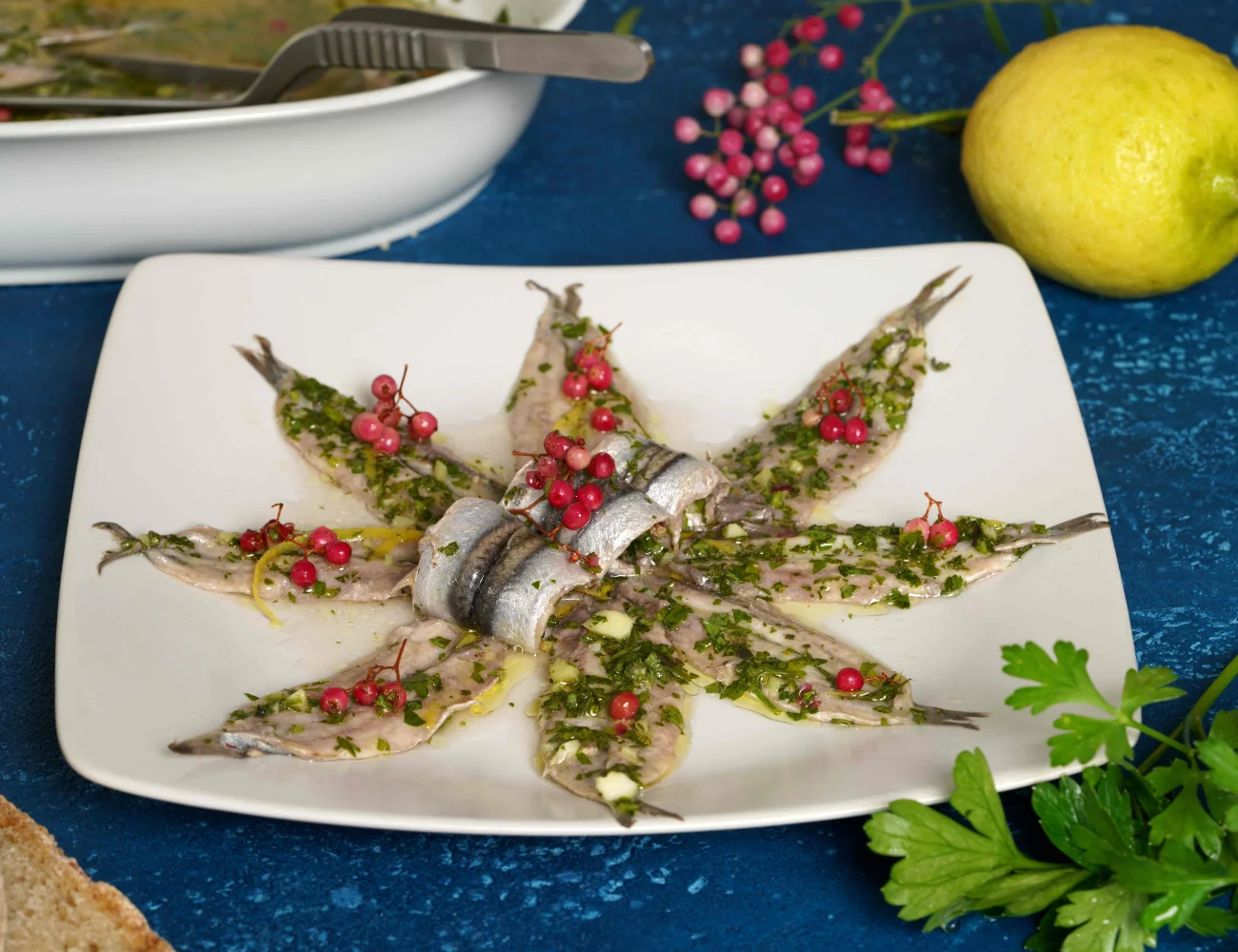In the tapestry of Italian-American customs, few are as steeped in communal joy and culinary splendor as the Feast of the Seven Fishes. This cherished ritual, which takes place on Christmas Eve, is a vivid display of cultural identity, connecting a community to its maritime roots through a procession of seafood dishes. Yet, its story begins not along the Italian coastline, but within the Italian-American neighborhoods. Keep reading to discover authentic Italian Feast of Seven Fishes recipes you can make this year for La Vigilia! Why cook with us? You’ll find step-by-step instructions and video recipes to make cooking these classics easy!
A Feast Born in America
The Feast of the Seven Fishes, ‘La Vigilia’ in Italian, is a celebration that has been nurtured and evolved in the Italian-American diaspora. It finds its origins in the Southern Italian tradition of abstaining from meat on the eve of a feast day – a practice rooted in the Catholic faith. When waves of Italian immigrants reached the shores of America, they brought with them the spirit of their homeland’s Christmastime vigil. Over time, this transformed into the elaborate seafood feast we know today, a testament to both religious observance and the bounty of America’s coastal waters. Interestingly, while Italians in Italy today do celebrate La Vigilia with a banquet of seafood and vegetarian dishes, they do not call it Feast of Seven Fishes— a term which refers to the Italian American tradition.
Feast of Seven Fishes Recipes: Appetizers
#1 Italian Marinated Anchovies

#2 Italian Tuna Mousse
Feast of Seven Fishes Recipes: Main Course
#3 Spaghetti with Clam Sauce
#4 Spaghetti with Mussels and Tomatoes
#5 Sicilian Swordfish Pasta with Eggplant
#6 Fregola Pasta Recipe with Clams
#7 Seafood Spaghetti
#8 Zesty Herbed Salmon
#9 Baked Sea Bass Recipe with Oven Roasted Potatoes
#10 Spaghetti alla Puttanesca
Feast of Seven Fishes Recipes: Desserts
#11 Panforte Margherita
#12 Panpepato
#13 Torta Mantovana
#14 Panettone
Even Italians and Italy usually buy their Panettone! Here’s a list of Italian brands on Amazon (affiliate link)
#15 Zuppa Inglese
Why Seven? The Symbolism of the Sea
The number seven holds a multitude of significances within the Bible and thus to a largely Catholic population. It represents perfection, completion, and in the context of this feast, the seven Sacraments. However, there is no strict rule on the number of dishes served. The feast can feature seven, nine, or even eleven seafood preparations, with each household tailoring the tradition to their interpretation and means.
Seafood as a Symbol
Seafood takes center stage in this celebration due to the Catholic practice of avoiding meat on holy days. But more than mere observance, the selection of seafood dishes is a deliberate nod to Italy’s rich coastal cuisine and the immigrants’ connection to the sea as a source of sustenance and livelihood. It’s a harmonious blend of faith, tradition, and a homage to the fishermen who have long been the lifeline of Italian coastal communities.
Italian-American Identity on a Plate
The Feast of the Seven Fishes is a vibrant cultural identifier for Italian-Americans. It is a rich, culinary narrative that tells of the journey from the old country to the new, the adaptation to America’s resources, and the steadfast hold on heritage. Each dish, whether it be baccalà or calamari, is a chapter of history, a story of family, and a celebration of community.
A Tradition Tailored by Generations
While the tradition may have started with simple, humble dishes, over generations, it has adapted to the abundance of America. The Italian-American community has expanded the feast to include a vast array of seafood, from the Atlantic’s lobsters to the Pacific’s salmon, all the while preserving the essence of the Italian culinary philosophy: fresh ingredients, prepared simply to highlight their natural flavors.
Preserving and Evolving the Feast
The Feast of the Seven Fishes continues to evolve, shaped by the hands of each generation. It is an ever-flowing stream of culture, carrying the flavors of the past into the future, preserving the communal essence of the Italian-American Christmas Eve. Whether it remains strictly traditional or is infused with contemporary twists, the heart of the celebration remains – a feast that is much more than the sum of its parts, it’s a confluence of history, family, and faith.